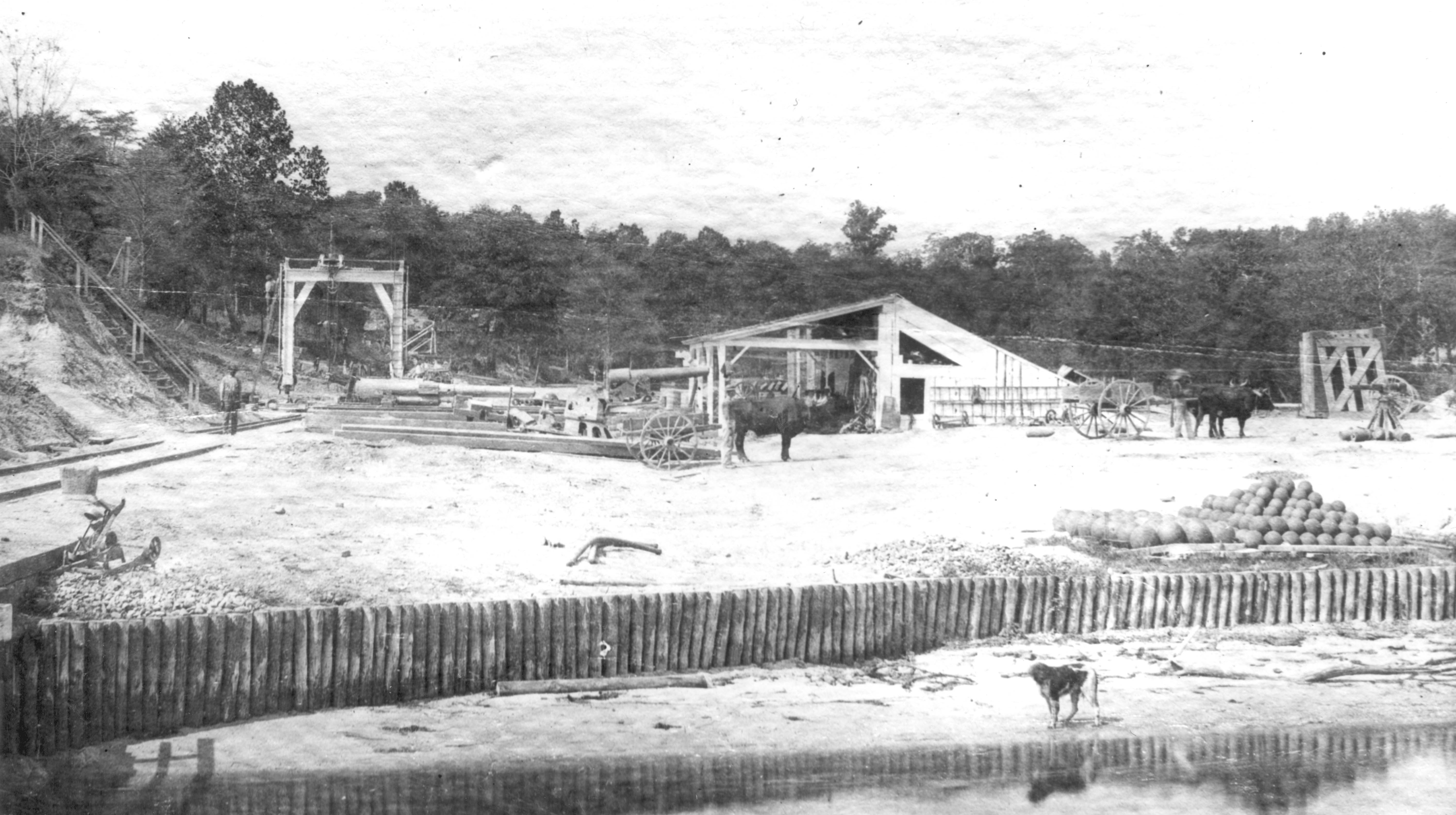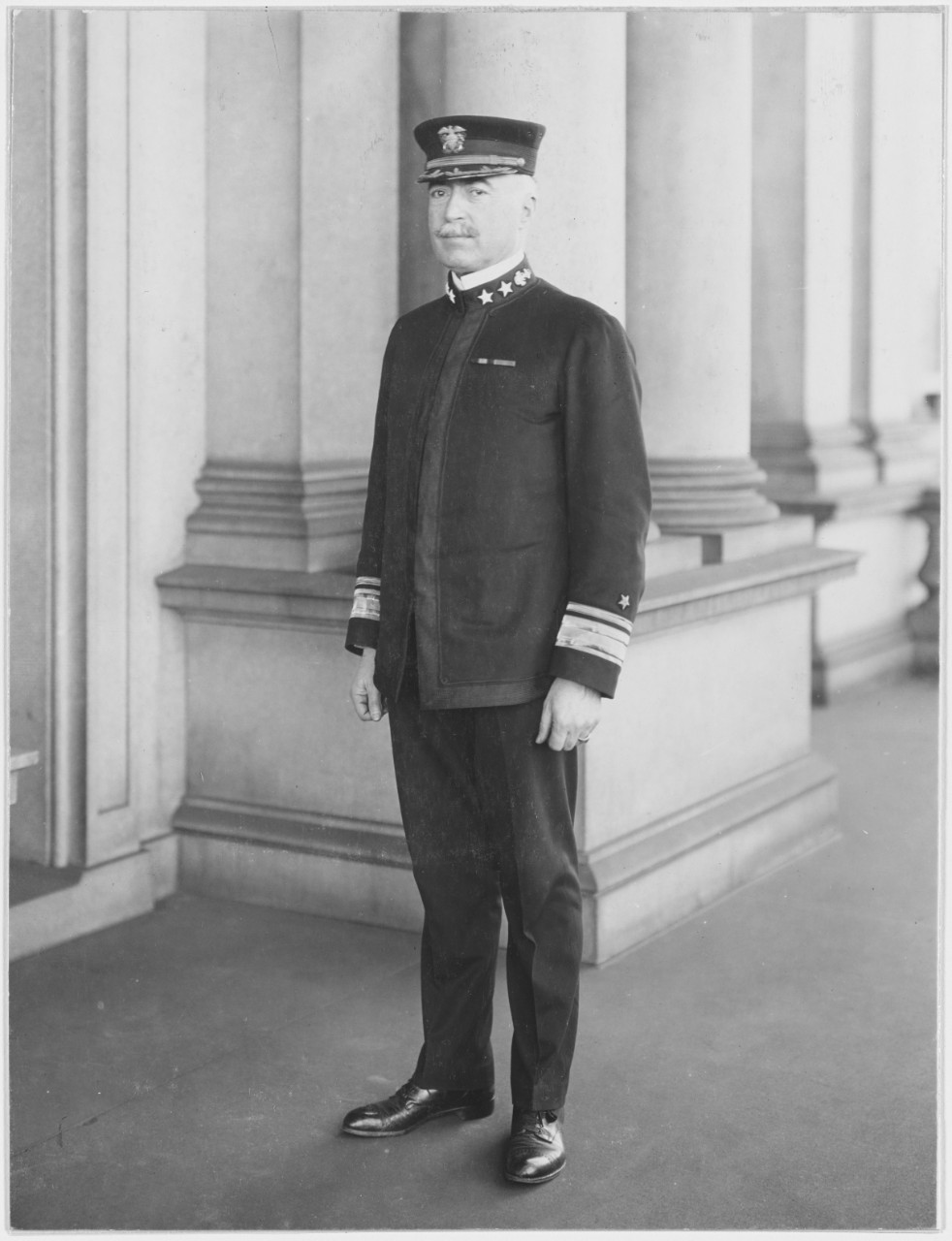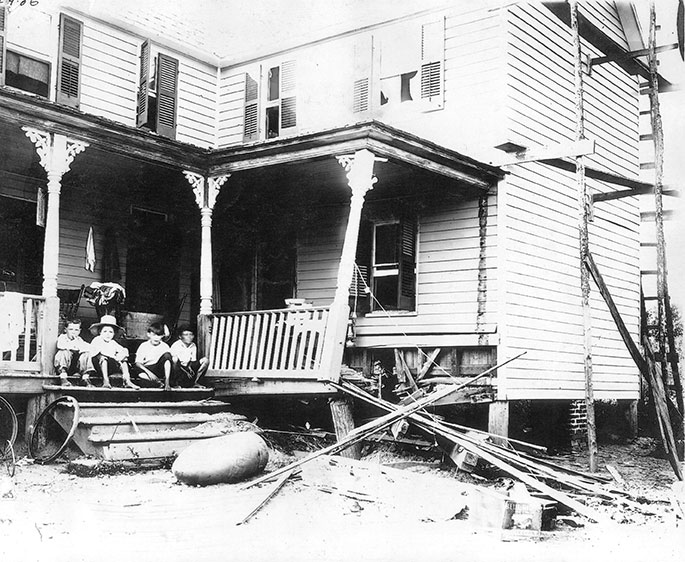
Problems at Indian Head
November 13, 2017
Before Dahlgren was established in 1918, the Navy moved its proving ground several times, trying to find a suitable location to test its big guns. First, it was decided the Experimental Battery in Anacostia, Maryland, was too restricted, so the range was moved from Anacostia to Annapolis, Maryland, in 1872. But with the onset of all-steel ships and longer range weapons, the battery was moved to Indian Head, Maryland, in 1890, only 18 short years later. It is there our story picks up because the gun range at Indian Head lasted nearly 30 years before it was finally transferred to a little spot on the Potomac River that came to be known as Dahlgren.
One of the earliest and most obvious shortcomings of the Indian Head site was geography. Gun emplacements were installed next to the river in a small valley, about 100 yards wide and drained by a small stream. Hills on either side of the area absorbed shots and potential explosions from the barrels being tested. All this worked out well for hauling the guns by barge from the Navy Yard, but it was a problem for down-range testing. Before the shell landed in the 8,000 yards of the Potomac’s open water, shots were fired blindly over the south embankment and traveled over land. A spotter on the riverfront, posted in a lean-to, reported on river traffic and was responsible for plotting where in the river a projectile had fallen.
 |
|
Rear Admiral Joseph Strauss during World War I, courtesy of the Naval History & Heritage Command.
|
And so, a decade after opening, the Officer in Charge of Indian Head, Lieutenant Joseph Strauss recommended purchasing or leasing land to the south of the station.
The Navy didn’t listen for another year, but in 1901, more than a thousand acres were purchased at Stump Neck from the Gaffield family. When the station installed a marine barracks there though, the troops had to evacuate the barracks every time a shot was under way. The traffic on the river also posed a problem, and small incidents began to rack up. A shell struck the water about forty feet from a barge in 1908. In 1909, a shell fragment damaged a local fisherman’s nets. And in 1911, at least two 12-inch projectiles fell in a residential area. But in 1913, one accident occurred that no one could ignore.
On July 3, 1913, Lieutenant Garret L. Schuyler readied a 14-inch gun for its second firing of the day. The gun was meant to go six miles downriver, and the lookout at that point phoned in the all-clear. The lookout noted the position of a yacht in the channel, about a thousand yards west of the line of fire. Schuyler proceeded with the shot, assuming that those aboard “would think the proving of one of our largest guns a somewhat unusual and interesting proceeding to witness.” When the shot went off, the shell went down range as planned, but the rotating band broke loose and landed about three hundred feet away from the yacht. This caused a bit of a problem because the yacht was none other than the presidential yacht, Mayflower, and on board was President Woodrow Wilson.
Understandably, the incident caused quite a flurry in the news. It appeared as if the Navy had fired upon the Democratic President, who was then considered a pacifist and was interested in reducing the defense budget. Then-Assistant Secretary of the Navy Franklin D. Roosevelt quietly investigated the incident, and Lieutenant Schuyler was cleared of wrongdoing. Don’t feel too badly for poor Lieutenant Schuyler, his Navy career wasn’t seriously impacted—he went on to serve as the Inspector of Ordnance (basically in charge) for Indian Head and Dahlgren from 1931 to 1934. See chart.
There were other notable high-level complaints about Indian Head (though you’d think one from the President would be enough). The Chief of the Bureau told the Secretary of the Navy as early as 1902 that “The great increase in the power of guns in recent years, and their greatly extended range, renders a more isolated location necessary for proving and ranging them.” Bureau of Ordnance (BUORD) Chief Rear Admiral Newton E. Mason noted in 1910 “This station, while very conveniently situated for the work of a proving ground in the most restricted sense of the term—the actual proving of guns, powders, armor plates, projectiles, etc.—is altogether unfit for an ‘experimental station.’” Civilian protests in particular might help secure funding for more land or a better range, but they also could support arguments for the closure of the facility. It was a fine line to walk. For 10 more years the solution was to continue adding on land, and by 1918, Indian Head had added about 3,208 acres to the property. The breaking point was the onset of World War I, when testing saw a dramatic increase, much of which was for testing the newer, larger guns for the war.
One of these guns was the 16"/45 battleship gun. Considering the Mark 1’s range of nearly 40,000 yards, Indian Head’s 6,000-yard range was just too short. The only way to proof the guns was horizontally at a low angle, making full elevation testing and accurate ranging just not possible. One test in the summer of 1916 sent a projectile through 13-5/8" armor plate, a braced butt built from 16” thick oak timbers, and 27' of sand reinforced by 5/8” skin plates. It angled up, went another mile down the station, and landed in the house of a local farmer. Luckily no one was injured, but the hazards were only going to get worse when the Navy planned for a 16"/50 gun. Later, when the 16-inch guns were ranged at Dahlgren, it was discovered that the Indian Head range tables were off by 3,000 yards. An error that great would have proved catastrophic in combat.
Though potentially devastating, these incidents ultimately led to establishing the Naval Proving Ground at Dahlgren. BUORD Chief Rear Admiral Ralph Earle was particularly interested in finding a suitable range for testing 14" railway guns, and he championed the relocation effort. He sent the Indian Head Inspector of Ordnance in Charge, Commander Henry E. Lackey, to locate a new range. Lackey suggested a piece of land on Machodoc Creek in Virginia that provided a straight, over-water shot of nearly 90,000 yards to the Chesapeake Bay. The site, as we know, became known as Dahlgren. Dahlgren remained under the jurisdiction of Indian Head until 1932.
I would be remiss if I didn’t mention one of the more legendary incidents that supposedly occurred at Indian Head. Now, I haven’t any primary evidence to support this story, but an explanation of the problems at Indian Head would be incomplete without it. Sometime during or after 1916, Molly Skinner wrote the Navy Department with a complaint. She claimed her cow had been grazing in a pasture when a large shell exploded within several yards of her, and the cow was not producing milk. Captain Lackey and a small party investigated the complaint and indeed found a sickly looking cow on the Skinner Farm. Captain Lackey paid the woman thirty dollars and had the cow brought back to Indian Head. The cow was forever known as Molly, and she never produced another ounce of milk.
UPDATE: After writing this, I was searching for something else entirely in the history collection and came across this memo, which mentions the time when a projectile was shot from Indian Head, lands on and skids across ice, and ends up hitting a cow. Not saying this is the same incident, but how many cow incidents can there be? Either way, seems like a dangerous time to be a cow near Indian Head!
 |
| The Swann Family Farmhouse |